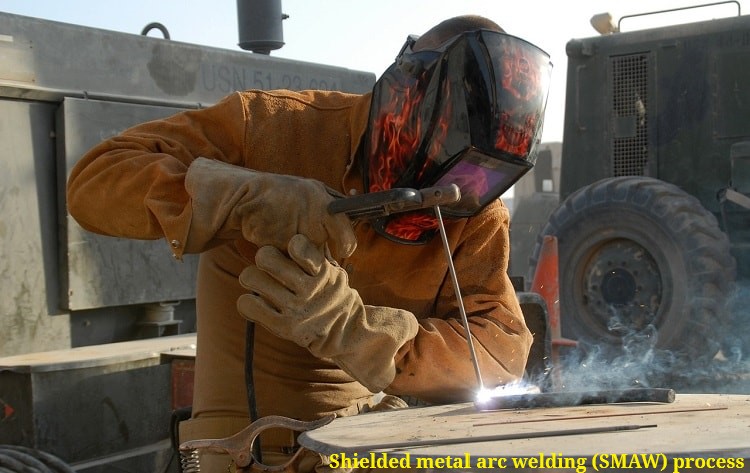manual metal arc welding Electrode coating types
As shown above, there are five basic electrode coating types used to make electrodes for the welding of carbon and low alloy steels. These coating types are then arranged into four basic electrode types or groups, which . are:
. cellulose
. rutile
. hydrogen-controlled
. iron powder.
* Cellulose welding (weldingwelder.blogspot.com)
These electrodes contain a high percentage of alpha flock (wood flour) and 3–7% moisture in the coating. This provides the fiery, deep-penetrating arc characteristic of cellulose electrodes. Cellulose electrodes run on low amperages compared to rutile electrodes (approximately 15%) and the thin, fluid slag does not completely cover the finished weld deposit. High spatter levels are produced and the weld appearance is characterised by coarse, uneven ripples. Application – used for the first (root) run on pipes and plates, welding in the vertical position (particularly vertical down) and wherever deep penetration is required. Storage conditions – should contain 3–7% moisture for best results. Do not store in electrode ovens.
* Rutile welding (weldingwelder.blogspot.com)
These electrodes contain a high proportion of titanium-dioxide and are known as the general purpose group of electrodes. They are used for general welding of low carbon steels, and are suitable for use in all welding positions. Rutile electrodes have a smooth running and stable arc, low to moderate spatter levels and moderate penetration. Most of them operate on AC or DC and have good appearance and easy slag detachability. Rutile electrodes may also have small amounts of iron oxide added to them to give them a fiery more penetrating arc. Application – used for general purpose welding on most joint types and weld positions.Storage conditions – rutile electrodes have no special storage requirements. Storage in a warm dry place is sufficient.
* Hydrogen-controlled (low hydrogen)
These electrodes have coatings of calcium carbonate and are designed to produce low hydrogen levels in the deposited weld metal as a means of minimizing cracking in the heat affected zone. They are characterised by a globular transfer of metal across the arc, low penetration as a means of minimizing weld metal dilution, and fluid slag. Application – hydrogen-controlled electrodes are used for welding high strength steels and produce tough, ductile weld metal with tensile strengths in excess of 490 N/mm2 Amperages used are similar to rutile electrodes but they require a minimum of 60 OCV. Storage conditions – should contain less than 0.2% moisture. They are supplied in sealed packets or cans to prevent absorption of moisture from the atmosphere. Upon opening, the electrodes should be transferred to an electrode oven and conditioned at 300 °C for at least one hour before use. Once they have been conditioned (all moisture is driven off) they should be kept at a minimum temperature of 100 °C. They should be used ‘hot’ from the oven and not allowed to cool.
* Iron powder/iron oxide
These electrodes have coatings which contain a high percentage of iron in the form of iron powder and/or iron oxide. They are characterised by high deposition rates, smooth arcs, low spatter, good appearance and excellent slag detachability. The heavy flux coating necessitates higher amperages be used as compared to other electrode types Application – electrodes containing iron powder in the flux coating are commonly used for structural welding of low carbon steels and are suitable for welding in the flat position only.
welding (weldingwelder.blogspot.com)

